Artificial intelligence-guided, high-speed robotic sorting system identifies materials by category on a conveyor belt. To date, the operational system has recognized over 50 billion objects in various arrangements.
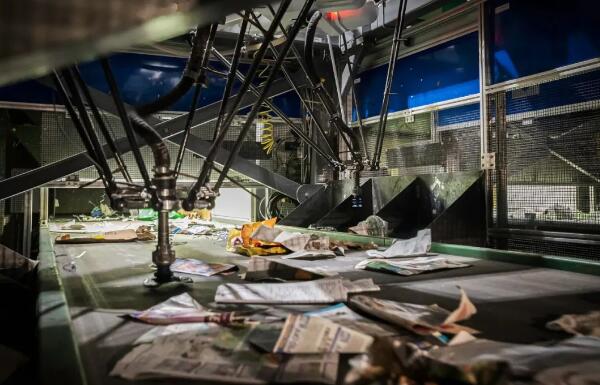
One morning, a large blue trash can sits in front of your house, filled with newspapers, cardboard, bottles, cans, foil takeout trays and empty yogurt containers. You might think you're doing your part to reduce waste. But after you've rinsed the yogurt container and tossed it in the trash, you may never think much about it again.
The contents of the recycling bin will be emptied into a truck and taken to a recycling facility for sorting. Most of the material will be used for processing and eventual use in new products. But a lot of it will end up in a landfill.
So how much of the material that goes into the garbage cans can be avoided going to the landfill? For countries that do recycle, the number (called the recycling rate) seems to average around 70 to 90 percent, which, while not widely available, seems pretty good, and in some cities it can be as low as 40 percent.
Even worse, only a small percentage of recyclables make it into the trash - just 32 percent in the U.S. and 10 to 15 percent globally. That's a lot of material made from limited resources that goes unnecessarily to waste.
There is a way to do better. Using computer vision, machine learning, and robotics to recognize and sort recycling materials, we can improve the accuracy of automated sorters, reduce the need for human intervention, and increase overall recycling rates.
Qunfeng Heavy Industries has already built systems that can perform this sorting. In the future, AI systems could also sort by material combination and original use, separating food-grade materials from containers with household cleaners and separating paper contaminated with food waste from cleaning paper.
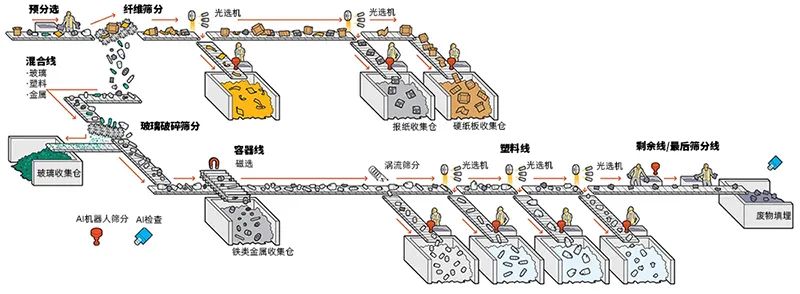
Recycling facilities use mechanical sorting, optical hyperspectral sorting and human workers. Here's what usually happens after a recycling truck leaves with the contents of a blue garbage can.
The trucks unload on a concrete pad called a tip floor. A front-end loader scoops up the bulk material and dumps it onto a conveyor belt, usually at a rate of 30 to 60 tons per hour.
The first stage is pre-selection. Human workers remove large or questionable items that shouldn't initially go into the collection truck - bicycles, large pieces of plastic wrap, propane tanks, car transmissions.

Sorters or human workers relying on optical hyperspectral imaging separate fibers (office paper, cardboard, magazines - called 2D products because they are mostly flat) from the remaining plastics and metals. In the case of an optical sorter, a camera stares at material rolling along a conveyor belt, detects an object made from the target substance, and sends a message to activate a set of electronically controllable solenoids that transfer the object to a collection bin.
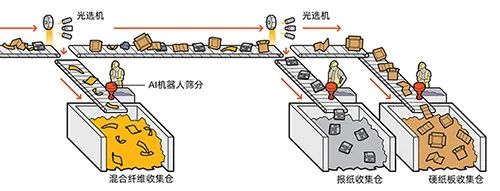
Non-fiber materials pass through a mechanical system with dense cam-like wheels. Large items slide by, while smaller items are stored in blue garbage cans with recyclable forks that head straight for the landfill - they're too small to sort. The machine also smashes glass, which falls to the bottom and is shielded from view.
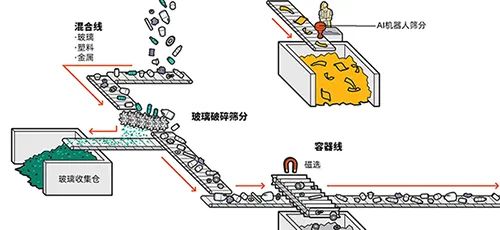
The rest of the stream then passes under overhead magnets and vortex-inducing machines that collect items made from ferrous metals, as well as a vortex-inducing machine that blasts non-ferrous metals into another collection area.
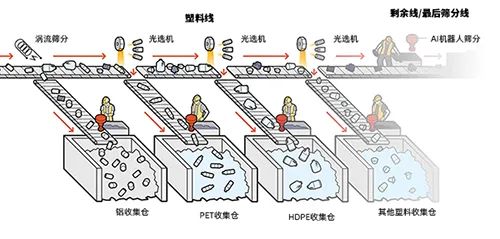
At this point, mostly plastics remain. More hyperspectral sorters that can pull out one type of plastic at a time, such as HDPE for detergent bottles and PET for water bottles.
Eventually, whatever's left - 10 to 30 percent of the truck's load - goes to landfills.
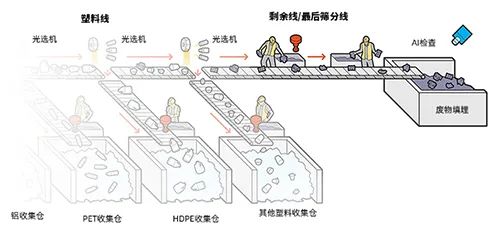
In the future, AI-powered robotic sorting systems and AI inspection systems could replace human workers in most cases of this process. In the chart, red icons indicate where AI-powered robotic systems could take the place of human workers, and blue icons indicate where AI auditing systems could provide a final check on the success of the sorting process.